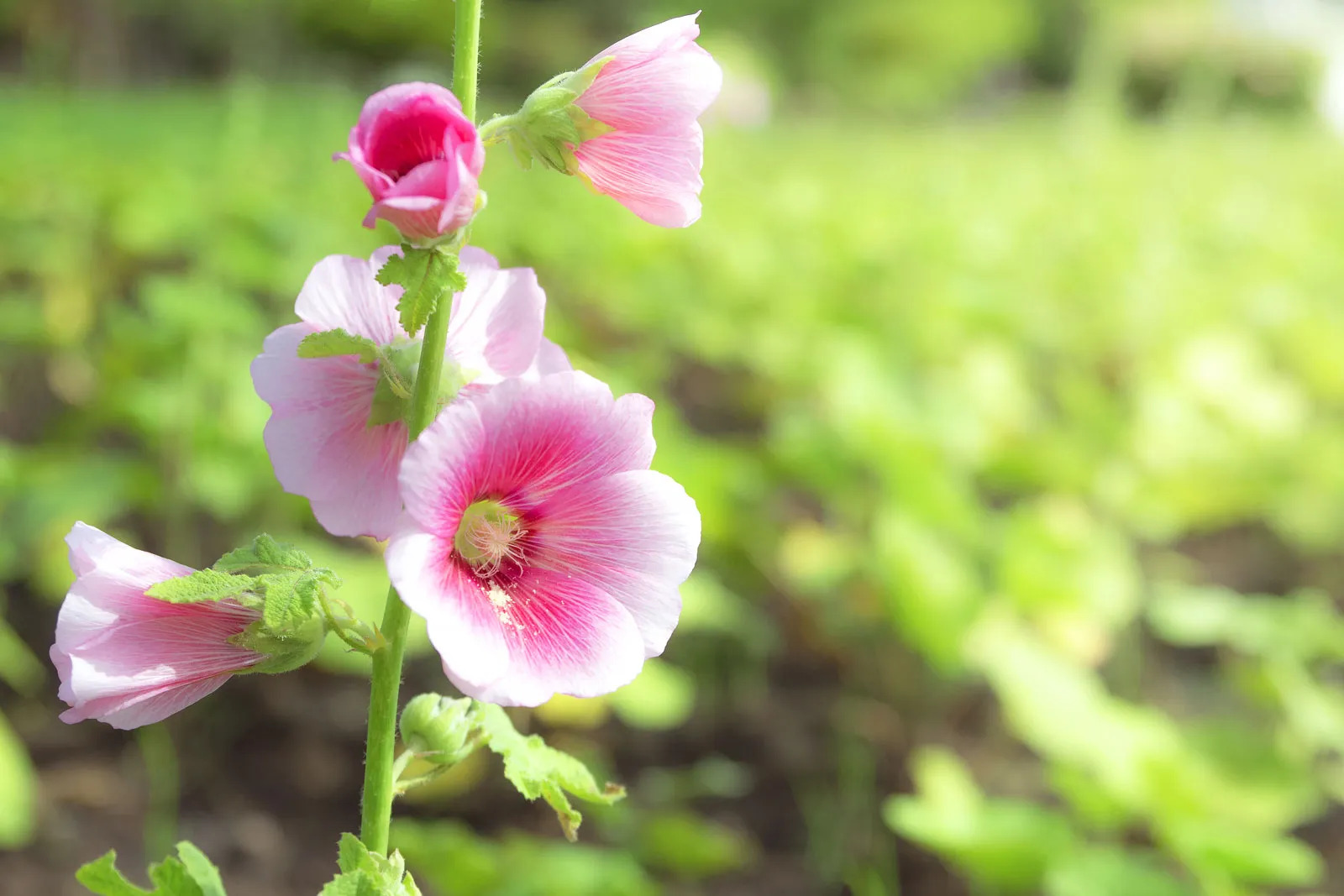
Hollyhock, also known by its scientific name Alcea rosea, is a stunning flowering plant that has captured the hearts of gardeners and nature enthusiasts for centuries. With its towering spires of vibrant blossoms, hollyhock adds a touch of whimsy and elegance to any garden or landscape. While many people may be familiar with its beauty, there are some surprising facts about hollyhock that are less known. From its historical significance to its medicinal properties, hollyhock is truly a fascinating plant. In this article, we will explore 10 surprising facts about hollyhock that will deepen your appreciation for this remarkable plant.
Key Takeaways:
- Hollyhock is not a true holly, but a tall and versatile flowering plant that attracts butterflies and hummingbirds. It has a long history of medicinal use and comes in a wide range of colors, making it a beautiful and beneficial addition to any garden.
- In addition to its stunning appearance, hollyhock leaves are edible and can be used in the kitchen. The plant also holds symbolic meanings of ambition and fruitfulness, making it a meaningful and practical choice for gardeners and flower enthusiasts.
Hollyhock is not a true holly
Contrary to its name, hollyhock (Alcea rosea) is not a true holly. It actually belongs to the mallow family, Malvaceae. This flowering plant is native to Asia and Europe and has been cultivated for its attractive flowers for centuries.
Hollyhock flowers can grow up to 9 feet tall
One of the most striking features of hollyhock is its impressive height. These tall plants can reach up to 9 feet in height, making them a standout in any garden or landscape. The towering spikes of vibrant, bell-shaped flowers are a sight to behold.
Hollyhock is a versatile plant
Hollyhock can grow in various environments and adapt to different conditions. It is a hardy perennial in warmer climates but is often grown as a biennial or short-lived perennial in colder regions. This makes it a versatile choice for gardeners looking to add a pop of color to their outdoor spaces.
The flowers attract butterflies and hummingbirds
The large, showy flowers of hollyhock act as a magnet for butterflies and hummingbirds. These pollinators are drawn to the nectar-rich blooms, adding an extra element of beauty and life to the garden. Planting hollyhocks can help support local pollinator populations.
Hollyhock has a long history of medicinal use
Hollyhock has been used in traditional medicine for centuries. Its roots and flowers have been utilized for their therapeutic properties, including soothing sore throats, treating respiratory ailments, and promoting digestion. The plant contains mucilage, which has a demulcent effect.
Hollyhock was once a symbol of fertility
In ancient times, hollyhock was regarded as a symbol of fertility and abundance. It was believed that growing hollyhocks in the garden would bring blessings of prosperity and good fortune to the household. Today, these charming flowers continue to bring joy and beauty to gardens around the world.
Hollyhock flowers come in a wide range of colors
While the most common hollyhock colors are shades of pink, purple, and white, these flowers actually come in a wide array of hues. From deep reds to vibrant yellows and even black, there is a hollyhock color to suit every taste and garden design.
Hollyhock leaves can be used for culinary purposes
The leaves of the hollyhock plant are edible and can be used in the kitchen. They have a mild flavor and can be added to salads, soups, or cooked as a nutritious green vegetable. It’s important to note that only young leaves should be harvested for culinary use.
Hollyhock is believed to have symbolic meanings
In the language of flowers, hollyhock is associated with ambition and fruitfulness. It symbolizes a person’s desire to achieve their goals and bear the fruits of their labor. In Victorian times, hollyhock was often included in floral arrangements to convey these symbolic messages.
Hollyhock can be propagated through seeds or cuttings
If you want to grow your own hollyhocks, you have two main options for propagation: seeds or cuttings. Hollyhock seeds can be sown directly in the garden or started indoors and transplanted later. Cuttings can be taken from existing plants and rooted to create new ones.
Conclusion
In conclusion, Hollyhock is a fascinating plant with a rich history and numerous surprising facts. From its towering height to its vibrant blooms, Hollyhock has captured the hearts of gardeners and nature enthusiasts alike. From its medicinal uses to its significance in folklore and symbolism, Hollyhock has a unique place in the world of plants. Whether you are interested in attracting pollinators, adding color to your garden, or uncovering the hidden stories behind this remarkable plant, Hollyhock is truly a remarkable specimen. So, go ahead and embrace the beauty and intrigue of Hollyhock in your garden or learn more about it in botanical history. It’s time to discover the wonders of this incredible plant species.
FAQs
Q: How tall can Hollyhock grow?
A: Hollyhock can grow up to 6-8 feet tall, making it an impressive and towering plant in any garden.Q: Do Hollyhocks require a lot of sun?
A: Yes, Hollyhocks thrive in full sun. They require at least 6-8 hours of direct sunlight per day to grow and bloom successfully.Q: Are Hollyhocks drought-tolerant?
A: While Hollyhocks are resilient and can tolerate some drought conditions, they generally prefer regular watering and well-drained soil. It is best to water them deeply and consistently, especially during hot and dry periods.Q: Can I grow Hollyhocks in containers?
A: Yes, Hollyhocks can be grown in containers; however, it is important to choose large and deep pots to accommodate their long taproots. Make sure the container has good drainage and provide support to keep the tall stalks upright.Q: How do I propagate Hollyhocks?
A: Hollyhocks can be propagated through seeds. Sow the seeds directly in the garden in early spring or fall. It is recommended to lightly scarify the seeds or soak them overnight for better germination.Q: Are Hollyhocks prone to any diseases?
A: Yes, Hollyhocks can be susceptible to rust disease, which appears as orange-brown spots on the leaves. To prevent rust, ensure good air circulation and avoid overhead watering. Removing infected leaves and using fungicides can also help control the disease.Q: Can Hollyhocks attract pollinators?
A: Absolutely! Hollyhocks are nectar-rich flowers that attract bees, butterflies, and hummingbirds. They play a vital role in pollination and are a great addition to any pollinator-friendly garden.Q: When do Hollyhocks usually bloom?
A: Hollyhocks typically bloom in late spring to early summer, but the exact blooming time can vary depending on the climate and growing conditions. Some cultivars may have a second blooming period later in the season.Q: Are all Hollyhock flowers single-petaled?
A: No, Hollyhock flowers can come in single, semi-double, or double forms. Single-petaled flowers have a central disk surrounded by a single layer of petals, while double-petaled varieties have multiple layers of petals, creating a fuller appearance.Q: Are the flowers of all Hollyhock varieties the same color?
A: No, Hollyhocks come in a wide range of colors including pink, red, white, yellow, and even bi-colored varieties. There are numerous cultivars available, each with its own unique flower color and characteristics.
Was this page helpful?
Our commitment to delivering trustworthy and engaging content is at the heart of what we do. Each fact on our site is contributed by real users like you, bringing a wealth of diverse insights and information. To ensure the highest standards of accuracy and reliability, our dedicated editors meticulously review each submission. This process guarantees that the facts we share are not only fascinating but also credible. Trust in our commitment to quality and authenticity as you explore and learn with us.


